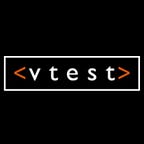Software Testing Models: 6 Methods and their Pros and Cons — VTEST
Without testing, any software is incomplete. The codes and other elements in software must be tested before launching it in the market or else the software might be full of bugs and errors and it directly affects the user experience. To avoid this and have a good image of your software in the market, software testing is a must.
There are various models and styles used in the software development process and we are here to discuss all of those. Well, each model has its pros and cons, and it’s upon the complexity and overall technical nature of your project. In this article, we will be digging deeper into all of those and have a wider analysis of each.
Let’s go then!
1. Waterfall Model
Waterfall Model is a well-known model which is followed broadly in the software testing industry. Like implied in the name, this process starts from a bigger source and subsequent phases fall done under it. Various steps. Each step or phase has its intention and functionality.
There are 4 stages in this as follows,
- Requirement gathering and Analysis
All the needs for the development of the required software are listed and analyzed. This involves detailed data of end-user requirements. - Software Design
Using the document created in the earlier phase as an input, this phase tests the design of the software. - Programmed implementation and Testing
- Maintenance
Now, we will have a look at the pros and cons of this method.
This is a well-known competitor of the Waterfall Model and many believe that it is better than that. In this case, the Test execution and development goes on in a simultaneous time frame. The testing initiates at the unit level and then spreads throughout the system.
This one is divided into five phases. Those are Unit testing, Integration testing, Regression testing, System Testing, and Acceptance testing.
Different cross-functional teams collaborate and discuss to evolve requirements and respective solutions. This one has a wide reputation for being an incremental and iterative model.
ProsCons
- In a larger case where the complexity of the software is more, the assessment of efforts that go at the initial stages becomes hard.
- Though it is a pro, a constant consumer interaction can distract the ultimate aim of the project as the developers know more about the whole process, and it not always the case that customers know what they want.
4. Spiral model
This one is more similar to the earlier phase with a slight modification. It gives more importance and emphasis on Risk Analysis. The 4 stages it involves are as follows. Planning, Risk Analysis, Engineering, and Evaluation. Here, the base level involves requirement gathering and risk assessment on which every subsequent upper spiral has been built.
Pros
- Risk is avoided as risk analysis is considered as an important part.
- Fantastic model for larger and complex systems.
- Additional functionalities can be added later if any circumstances change in the middle of the process.
- Early production of software in the cycle.
Cons
- A heavy budget and expensive model. It also requires proper expertise in risk analysis.
- A low rate of smooth working in simpler projects.
5. Rational Unified Process
Each stage in this model is organized into various iterations. It involves 4 stages. The different aspect of this model is that each iteration here should differently satisfy the said criteria before the initiation of the next phase.
Pros
- This method emphasizes accurate documentation which indirectly resolves the risks involving in the ever-changing needs of the consumer.
- The process continued through the Software Development Life Cycle and therefore the integration takes much less time.
Cons
- It’s not a layman’s job. The team members have to be technical experts in the respective fields.
- Constant integration gives rise to confusion in the big projects.
6. Rapid application development
Again, this one is also similar to the Agile model. It is incremental. The development of the components here is parallel. After that, the developmental assembly takes place.
Pros
- The simultaneous development of components makes it a quicker method as the development time gets lessened. Also, the components can be reused.
- Integration issues are easily and quickly solved as integration begins from the initial stages.
Cons Conclusion
The SDLC i.e. Software Development Life Cycle consists of the various methods and the 6 methods which we just discussed are not the end of this. With the rise of innovations in the technology and software development fields, hundreds of new methods have been introduced by the experts in the industry.
The newer methods and stages in these methods change constantly as more efficient ways are being discovered. One needs to understand all the elements of these methods and then plan the SDLC according to their Project requirements and preferences.
How VTEST can help
With a team of young and dynamic testers who are not only updated with the new and upcoming technology but also know the old methods which are helpful and working, VTEST can change the game for your SDLC. Keeping a cooperative approach towards the work, VTEST will help you go through the SDLC like butter, resulting in very crisp and tasteful user experience for your customers.
VTEST it!
Originally published at https://www.vtestcorp.com on September 29, 2020.
